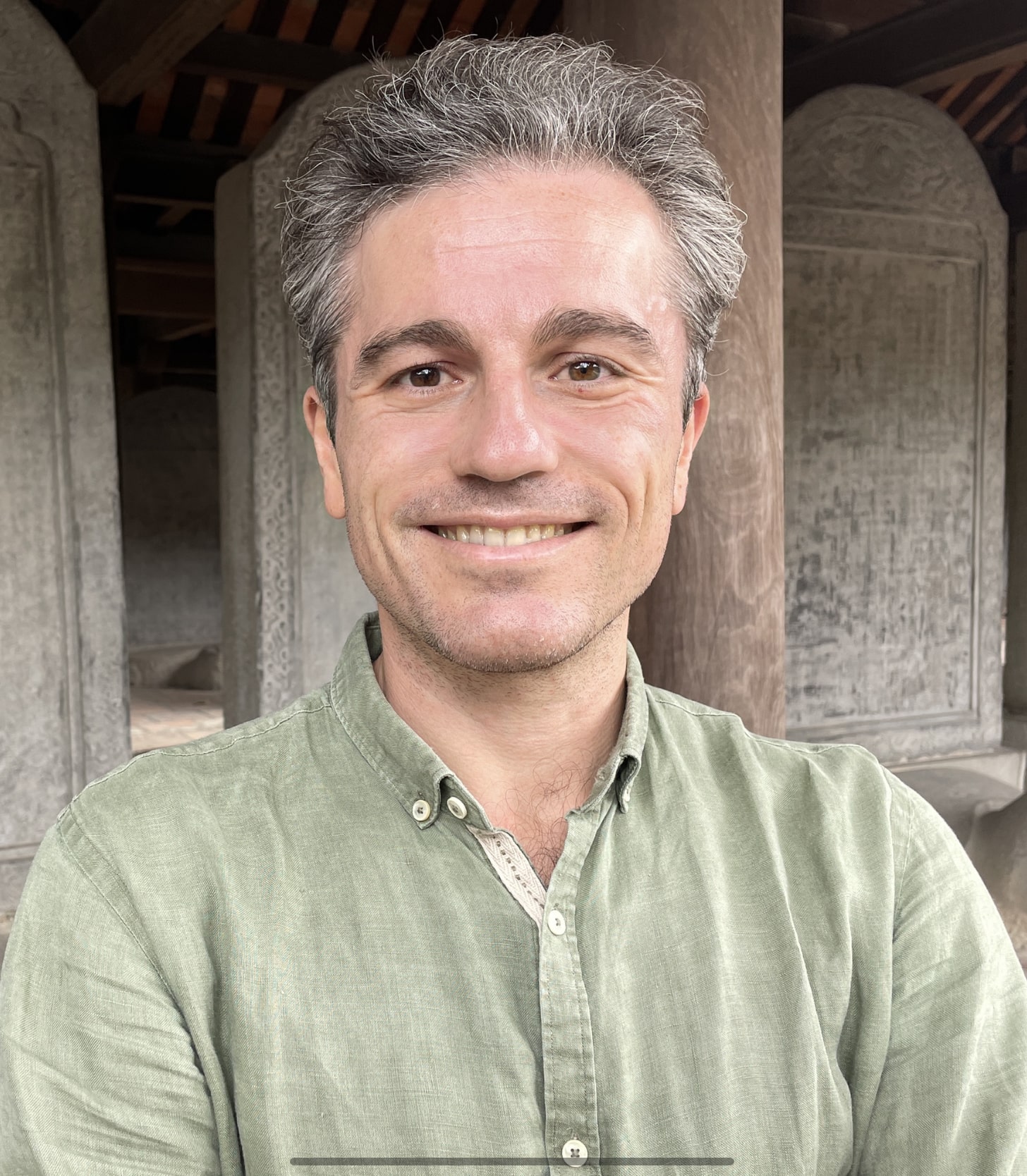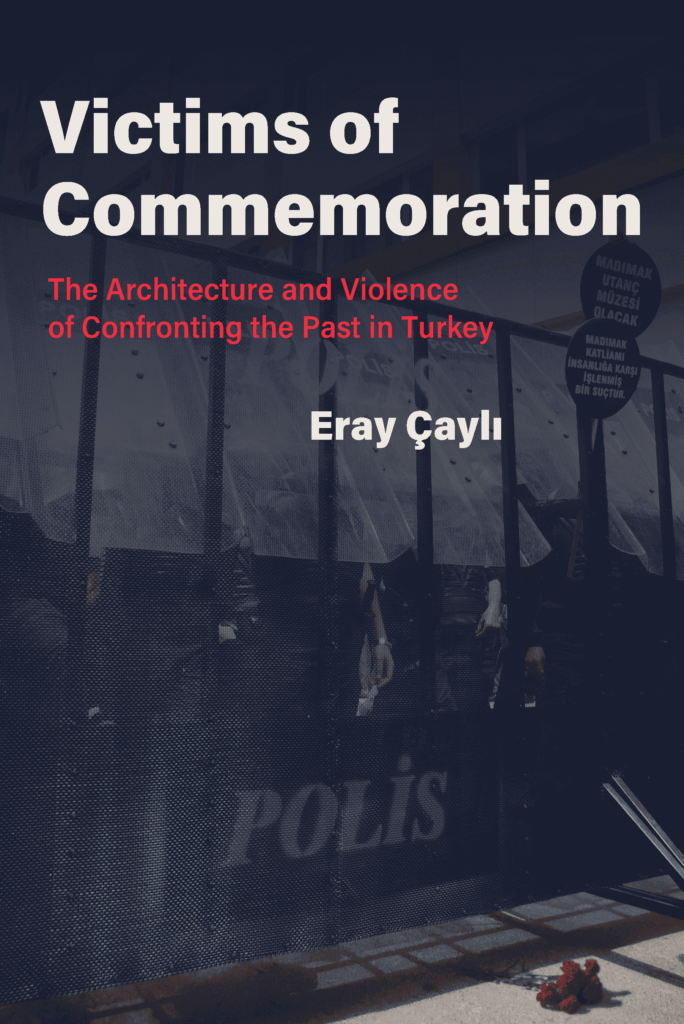A few months after his Justice and Development Party or AKP won Turkey’s general elections in 2011, then Prime Minister Recep Tayyip Erdogan called on his fellow citizens to confront the past. In the years that followed several prominent sites of state sponsored violence targeting ethnic and religious minorities and former political opponents of the regime were slated to become memorials and museums. What inspired this desire to confront the past? What were these sites of memory? How did the violent histories of these sites complicate these initiatives? These are the questions Professor Eray Çaylı examines in his recent book Victims of Commemoration: The Architecture and Violence of Confronting the Past in Turkey.
The impetus for confronting the past came from several directions. Already a longtime member of the NATO Western military alliance, Turkey’s leadership was interested in benefiting from membership in the expanded European Union. Reckoning with its history of state sponsored violence and adopting more liberal and conciliatory positions toward victimized ethnic and religious minorities would better align Turkey with European norms and expectations. Moreover, many ethnic and religious minorities, such as Kurds and Alevis, had long sought greater rights and recognition within Turkey.
Eray Çaylı looks at three sites in particular that were selected to become museums and memorials. The first was the former Madimak Hotel in Sivas, site of the 1993 arson attack that killed two hotel workers and thirty three guests who had come to Sivas to participate in an annual Alevi cultural festival. The hotel was set aflame by an angry mob while government authorities looked on. The Madimak Hotel was converted into the Science and Cultural Center with a special “Memory Corner” devoted to the incident. The two other sites were both prisons. Ulucanlar Prison in Ankara housed many of the leftist political opponents of the regime during the turbulent 1960s and early 1970s. It was at Ulucanlar that the leaders of the 1968 student movement were hanged. Diyarbakir Prison is located in Turkey’s Kurdish heartland and gained notoriety in the 1980s as the site where Kurdish activists were tortured under the orders of Turkey’s military rulers. Ulucanlar was converted into a museum while Diyarbakir is in the process of becoming a museum.
With his training in architecture and anthropology, Çaylı isn’t just interested in how structures like museums and memorials represent the past or project a vision of the future. Çaylı wants to show how the built environment is layered with history and memory and has the ability to inspire and generate political action. The Madimak Hotel, for example, wasn’t just located in the Alevi heartland of Sivas, the site was also in close proximity to the location where Pir Sultan Abdal, a sixteenth century minstrel and prominent Alevi martyr was executed for refusing to respect Ottoman power. The Alevi cultural festival was named after Pir Sultan Abdal and the violence in Sivas began with attacks on the “Minstrels Monument” placed just outside the festival’s main venue. Holding the festival in Sivas was regarded by many Alevis as the reclaiming of a space infused with historical significance. In much the same way some Alevis regarded the arson attack on the Madimak Hotels as a continuation of a long history of Alevi martyrdom. It is not just the memory of the event but also the layers of history and memory associated with the place that inspire Alevi activists to return to Sivas every year since the attack to preserve the memory of the victims and to fight for Alevi rights and recognition in Turkey.
The book argues that the benchmark against which to appraise commemoration is not the instances of violence and injustice it proclaims to overcome but rather those that exist alongside or within it and are at times even exacerbated by it. Eray Çayli, Victims of Commemoration: The Architecture and Violence of Confronting the Past in Turkey.
Çaylı notes that memories of the past associated with specific sites can also have a transethnic dimension. Hardships and misfortune experienced by one ethnic or religious group in the present can be understood in terms of the suffering of other groups in the past. Sivas and Diyarbakir historically had large Armenian populations and both sites figured prominently in the Armenian genocide. Many public buildings in the heart of Turkey’s capital of Ankara, such as Ulucanlar Prison, are located on land seized during the Armenian genocide. Natural geographic features, such as streams and brooks, still have colloquial names, such as bloody brook or consignment stream, that recall the region’s violent past. Natural disasters, such as earthquakes, or attacks on particular groups like Alevis in the Sivas arson attack, are often understood as the consequence of a dark past coming around again.
Memories of the past can sometimes result in understandings of memorial projects that were not necessarily the intention of the creators. For example, the Madimak Hotel, converted into the Science and Cultural Center, was intentionally left incomplete with entire floors that remained empty. The stated aims of this provisional status were to allow participants to shape the future form, contents, and function of the establishment. In practice, however, the provisional character of the project triggered conspiratorial thinking as many wondered if the true goal was to cater to the interests of the Alevi community. Drawing from a long history of paranoia about foreign threats to Turkish sovereignty stretching back to the Sèvres Treaty following World War I, the unfinished Science Culture Center fueled imaginations about possible Alevi schemes and plots.
Similarly, a long history of seeing the nation through the lens of victimization had an important bearing on the transformation of Ulucanlar Prison into a museum. Former leftist political inmates lobbied for the museum to become a site that would educate visitors about repression of the political left. The local chapter of the Chamber of Architects which became involved in the design of the museum was also determined to preserve the specificity of the experience of the political left at Ulucanlar. In particular, they are wanted to feature the execution at Ulucanlar of the leaders of the 1968 student revolutionary movement. They wanted to show how the regime imprisoned and tortured thousands of activists following the 1980 coup. Lastly, they wanted to highlight the suppression of efforts by prisoners between 1999 and 2000 to protest through hunger strikes against the use of solitary confinement.
In the end, however, the hopes and aspirations of the former inmates and the architects who supported them were swept aside. Local authorities who took control of the project stripped the museum of much of its historical specificity. One section of the prison, deemed to have little historical value, was leveled and replaced with a garden. Bathrooms where prisoners who engaged in hunger strikes were violently beaten were given a facelift that masked their dark past. There was even talk of transforming the isolation cells that triggered the hunger strikes into tourist attractions where visitors could pay for the experience of being locked up.
When it came to the actual inmates we see an equally dramatic rewriting of the story of Ulucanlar. Personal objects of famous prisoners include those of individuals, such as Erdoğan, who never spent time at Ulucanlar. Biographies of former inmates indiscriminately lump together individuals from across the political spectrum. Sound recordings intended to convey conversations between prisoners are devoid of all political content. Photographs of the former 1968 revolutionary student leaders hanged at Ulucanlar are located in the courtyard but without historical or biographical information. Moreover, the gallows, made infamous for their use on the revolutionary student leaders, are put on display behind bars with a sign proclaiming how Turkey, following the end of military rule, abolished capital punishment. By depoliticizing and decontextualizing the past Ulucanlar becomes a repository for how the nation was victimized by the era of military rule.
Among the three sites of memory which Çaylı discusses, Diyarbakir has only recently begun the process of being converted into a museum. Similar to how natural disasters or attacks on religious minorities in the present can trigger memories of violence from the past, seemingly innocuous events in the present recall Diyarbakir’s dark past. When local students were asked to paint the outer walls of the prison with paintings and inspirational quotes from famous artists and writers, former inmates remembered the use of painting as a technology of torture. A common form of punishment for Kurdish prisoners was to force them to paint the walls of the prison with Turkish nationalist slogans and portraits of Turkish national heroes. It was in protest to this use of painting that several inmates secretly stockpiled the flammable elements used to make the paint and self immolated on May 18, 1982. These memories persist not only in the minds of former inmates but through the films, novels, and drawings of artists who survived this experience.

Eray Çaylı
Eray Çaylı is Professor of Human Geography with a Focus on Violence and Security in the Anthropocene at the University of Hamburg. He previously spent over a decade at University College London and the London School of Economics. He is the author of Architectures of Emergency in Turkey: Heritage, Displacement and Catastrophe (with Pinar Aykac and Seven Ercan), İklimin Estetiği: Antroposen Sanatı Ve Mimarlığı Üzerine Denemeler (Winner of 2021 Cevdet Kudret Literature Award), and Victims of Commemoration: The Architecture and Violence of Confronting the Past in Turkey.


